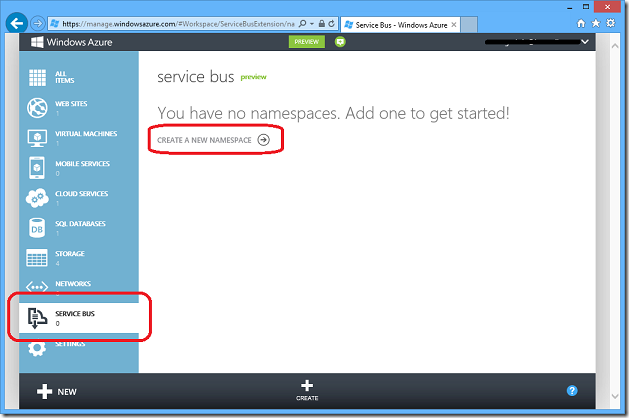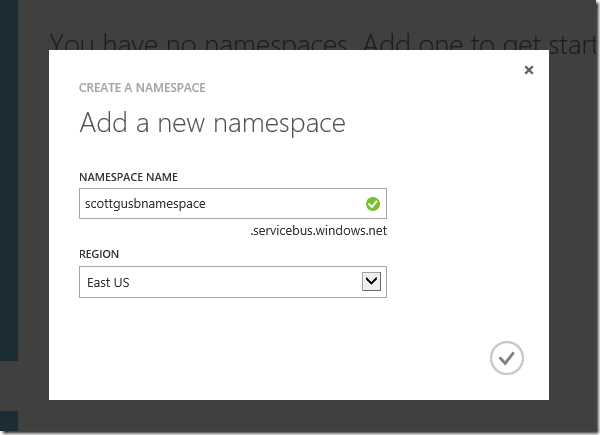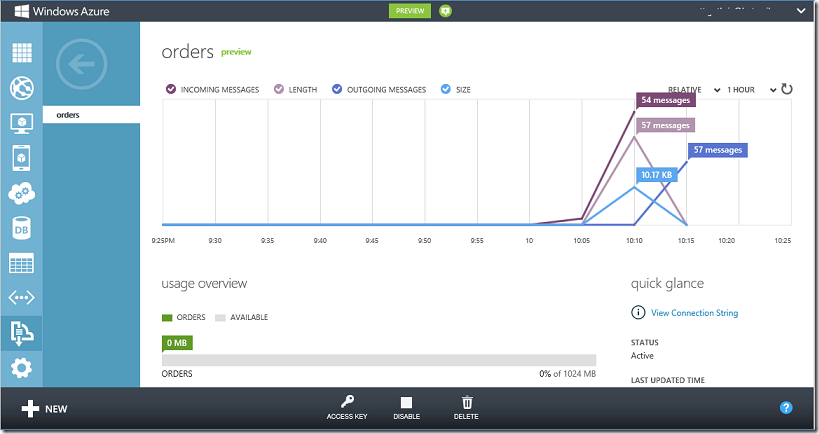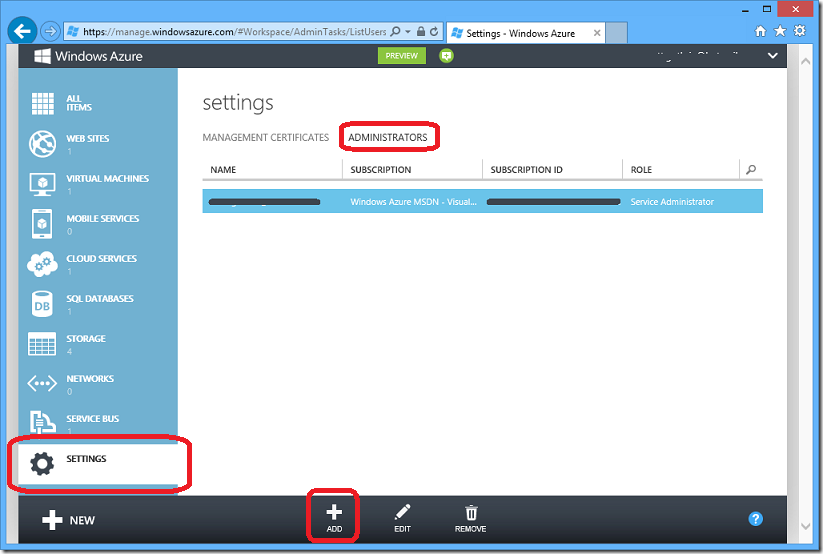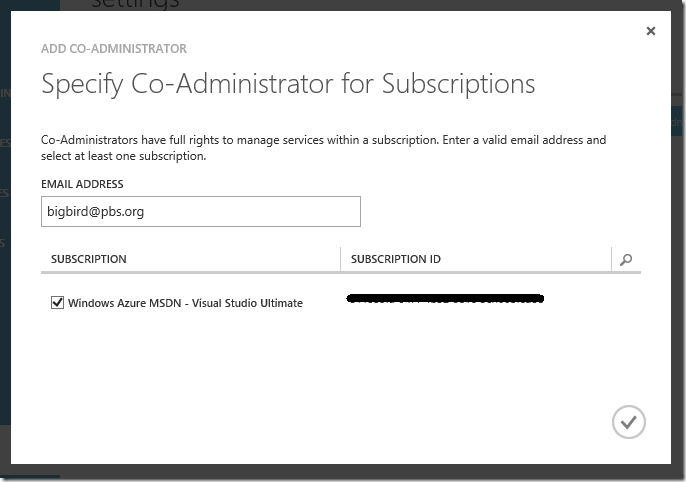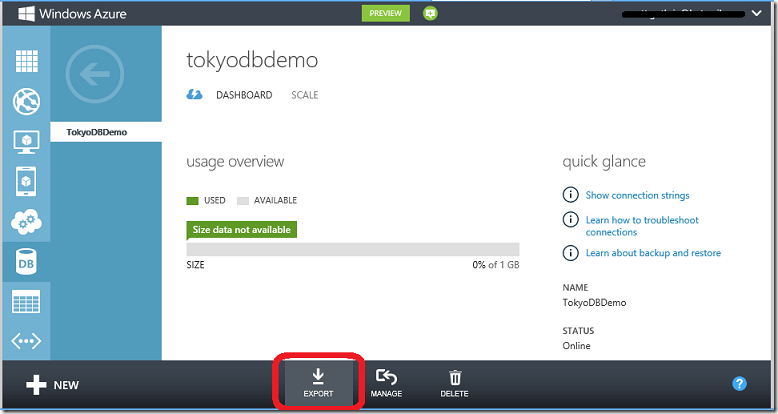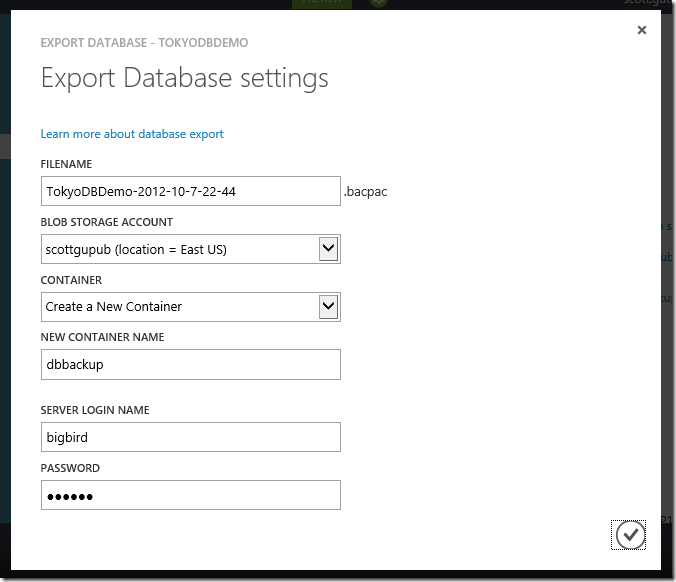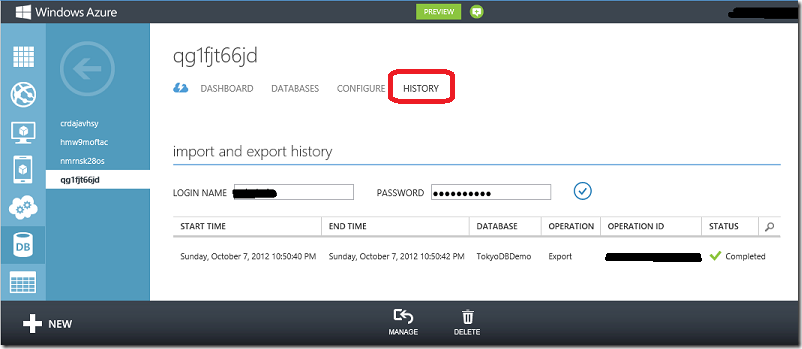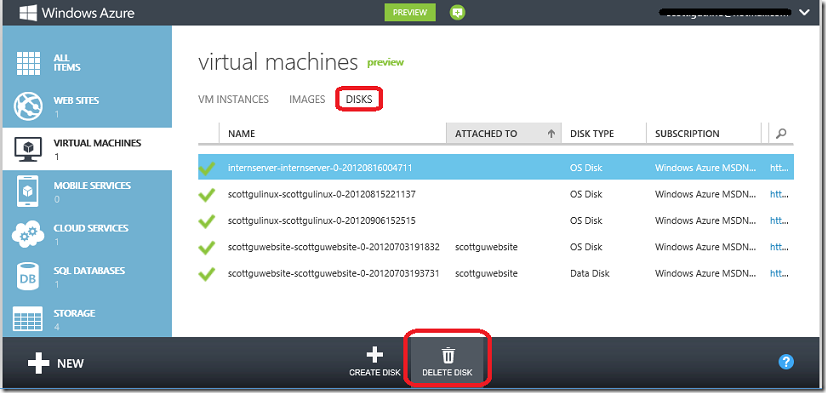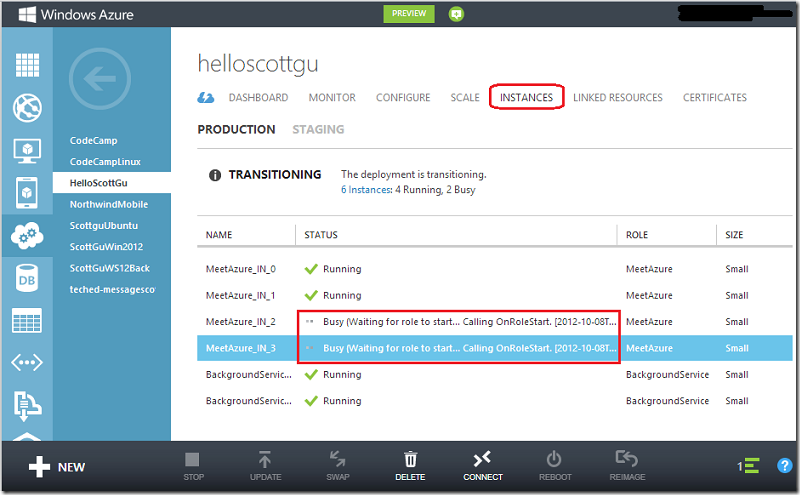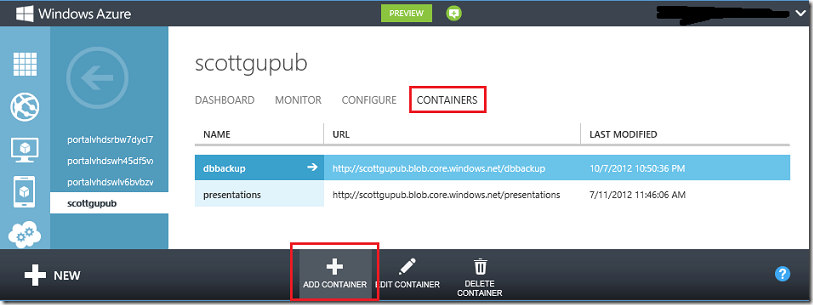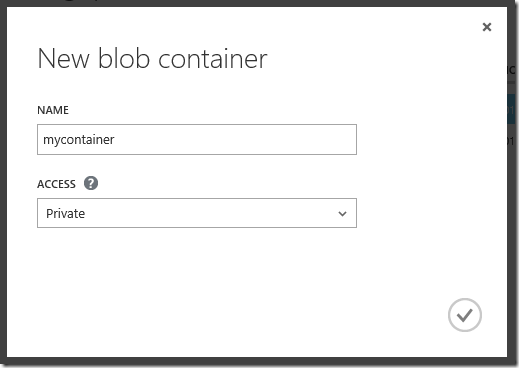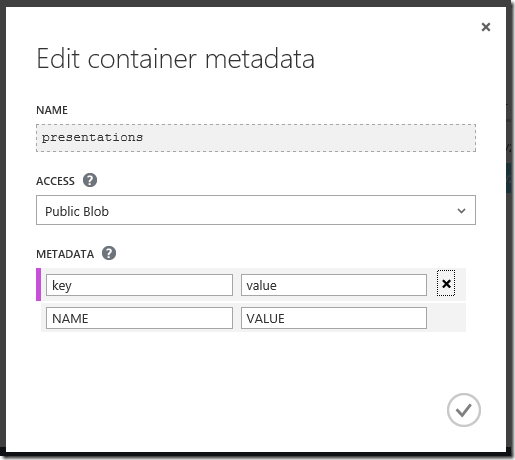Announcing: Improvements to the Windows Azure Portal
Earlier today we released a number of enhancements to the new Windows Azure Management Portal. These new capabilities include:
- Service Bus Management and Monitoring
- Support for Managing Co-administrators
- Import/Export support for SQL Databases
- Virtual Machine Experience Enhancements
- Improved Cloud Service Status Notifications
- Media Services Monitoring Support
- Storage Container Creation and Access Control Support
All of these improvements are now live in production and available to start using immediately. Below are more details on them:
Service Bus Management and Monitoring
The new Windows Azure Management Portal now supports Service Bus management and monitoring. Service Bus provides rich messaging infrastructure that can sit between applications (or between cloud and on-premise environments) and allow them to communicate in a loosely coupled way for improved scale and resiliency. With the new Service Bus experience, you can now create and manage Service Bus Namespaces, Queues, Topics, Relays and Subscriptions. You can also get rich monitoring for Service Bus Queues, Topics and Subscriptions.
To create a Service Bus namespace, you can now select the “Service Bus” tab in the Windows Azure portal and then simply select the CREATE command:
Doing so will bring up a new “Create a Namespace” dialog that allows you to name and create a new Service Bus Namespace:
Once created, you can obtain security credentials associated with the Namespace via the ACCESS KEY command. This gives you the ability to obtain the connection string associated with the service namespace. You can copy and paste these values into any application that requires these credentials:
It is also now easy to create Service Bus Queues and Topics via the NEW experience in the portal drawer. Simply click the NEW command and navigate to the “App Services” category to create a new Service Bus entity:
Once you provision a new Queue or Topic it can be managed in the portal. Clicking on a namespace will display all queues and topics within it:
Clicking on an item in the list will allow you to drill down into a dashboard view that allows you to monitor the activity and traffic within it, as well as perform operations on it. For example, below is a view of an “orders” queue – note how we now surface both the incoming and outgoing message flow rate, as well as the total queue length and queue size:
To monitor pub/sub subscriptions you can use the ADD METRICS command within a topic and select a specific subscription to monitor.
Support for Managing Co-Administrators
You can now add co-administrators for your Windows Azure subscription using the new Windows Azure Portal. This allows you to share management of your Windows Azure services with other users. Subscription co-administrators share the same administrative rights and permissions that service administrator have - except a co-administrator cannot change or view billing details about the account, nor remove the service administrator from a subscription.
In the SETTINGS section, click on the ADMINISTRATORS tab, and select the ADD button to add a co-administrator to your subscription:
To add a co-administrator, you specify the email address for a Microsoft account (formerly Windows Live ID) or an organizational account, and choose the subscription you want to add them to:
You can later update the subscriptions that the co-administrator has access to by clicking on the EDIT button, and then select or deselect the subscriptions to which they belong.
Import/Export Support for SQL Databases
The Windows Azure administration portal now supports importing and exporting SQL Databases to/from Blob Storage. Databases can be imported/exported to blob storage using the same BACPAC file format that is supported with SQL Server 2012. Among other benefits, this makes it easy to copy and migrate databases between on-premise and cloud environments.
SQL Databases now have an EXPORT command in the bottom drawer that when pressed will prompt you to save your database to a Windows Azure storage container:
The UI allows you to choose an existing storage account or create a new one, as well as the name of the BACPAC file to persist in blob storage:
You can also now import and create a new SQL Database by using the NEW command. This will prompt you to select the storage container and file to import the database from:
The Windows Azure Portal enables you to monitor the progress of import and export operations. If you choose to log out of the portal, you can come back later and check on the status of all of the operations in the new history tab of the SQL Database server – this shows your entire import and export history and the status (success/fail) of each:
Enhancements to the Virtual Machine Experience
One of the common pain-points we have heard from customers using the preview of our new Virtual Machine support has been the inability to delete the associated VHDs when a VM instance (or VM drive) gets deleted. Prior to today’s release the VHDs would continue to be in your storage account and accumulate storage charges.
You can now navigate to the Disks tab within the Virtual Machine extension, select a VM disk to delete, and click the DELETE DISK command:
When you click the DELETE DISK button you have the option to delete the disk + associated .VHD file (completely clearing it from storage). Alternatively you can delete the disk but still retain a .VHD copy of it in storage.
Improved Cloud Service Status Notifications
The Windows Azure portal now exposes more information of the health status of role instances. If any of the instances are in a non-running state, the status at the top of the dashboard will summarize the status (and update automatically as the role health changes):
Clicking the instance hyperlink within this status summary view will navigate you to a detailed role instance view, and allow you to get more detailed health status of each of the instances. The portal has been updated to provide more specific status information within this detailed view – giving you better visibility into the health of your app:
Monitoring Support for Media Services
Windows Azure Media Services allows you to create media processing jobs (for example: encoding media files) in your Windows Azure Media Services account. In the Windows Azure Portal, you can now monitor the number of encoding jobs that are queued up for processing as well as active, failed and queued tasks for encoding jobs. On your media services account dashboard, you can visualize the monitoring data for last 6 hours, 24 hours or 7 days.
Storage Container Creation and Access Control Support
You can now create Windows Azure Storage storage containers from within the Windows Azure Portal. After selecting a storage account, you can navigate to the CONTAINERS tab and click the ADD CONTAINER command:
This will display a dialog that lets you name the new container and control access to it:
You can also update the access setting as well as container metadata of existing containers by selecting one and then using the new EDIT CONTAINER command:
This will then bring up the edit container dialog that allows you to change and save its settings:
In addition to creating and editing containers, you can click on them within the portal to drill-in and view blobs within them.
Summary
The above features are all now live in production and available to use immediately. If you don’t already have a Windows Azure account, you can sign-up for a free trial and start using them today. Visit the Windows Azure Developer Center to learn more about how to build apps with it.
We’ll have even more new features and enhancements coming later this month – including support for the recent Windows Server 2012 and .NET 4.5 releases (we will enable new web and worker role images with Windows Server 2012 and .NET 4.5, and support .NET 4.5 with Websites). Keep an eye out on my blog for details as these new features become available.
Hope this helps,
Scott
P.S. In addition to blogging, I am also now using Twitter for quick updates and to share links. Follow me at: twitter.com/scottgu
